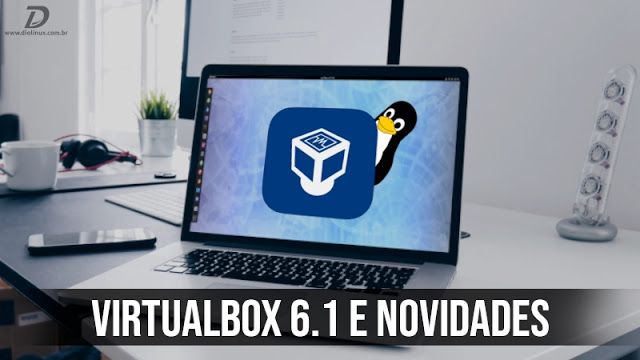Check out the news of the new version of VirtualBox.
VirtualBox version 6.1 has compatibility with the Linux kernel 5.4, peripheral management improvements, user interface, and are now available for download in its trial version.  Not long ago, we posted here on the blog the news that had come in the versions 6.0.10 and 6.0.14 VirtualBox. The news that is coming with version 6.1, which is currently in the testing phase, promises to be even more numerous and important compared to previous releases.
Not long ago, we posted here on the blog the news that had come in the versions 6.0.10 and 6.0.14 VirtualBox. The news that is coming with version 6.1, which is currently in the testing phase, promises to be even more numerous and important compared to previous releases.
If you are a basic user, used to using browsers, media players, some games, and do not have a great knowledge of slightly advanced tools, you may not know exactly what, and how system virtualizers such as VirtualBox work. . In this case, it is extremely important that you watch the video below so that you can gain knowledge and get the most out of the content of this article.
The list of enhancements that are being implemented in version 6.1 of the relatively large software, so I've selected for this article all the ones I thought most relevant, which you check out below:
Experimental support for file transfer between virtual machines running Windows on Linux host systems;
Bugs related to mouse and keyboard integration with VMs have been fixed;
Added support for YUV2 textures on Linux and MacOS host systems, which promises to improve the performance of 3D video and applications using VBoxSVGA and VMSVGA graphics adapters, allowing the guest system to utilize more host system GPU features, and improving the performance of software using OpenGL;
Support for hardware virtualization on Intel CPUs improved;
Fixed bug affecting mouse pointer scale / size;
Increased number of guest systems supported;
EHCI USB Controller Implementation Enhancements
Filter implementation that makes it possible to identify a USB port on the system, as well as specify a path to it;
I include a new type of network adapter, PCnet-ISA;
Implemented support to import a VM from Oracle Cloud infrastructure;
Added extended support for Oracle Cloud, allowing the creation of multiple virtual machines without the need to re-upload to each one;
Added multimedia keys to the virtual keyboard;
Of all the improvements mentioned above, the ones that excited me the most were those related to the VBoxSVGA and VMSVGA graphics adapters. I believe it is only a matter of time until the day comes that we can use VMs even for heavier tasks such as playing and editing videos.
Just like me, do you also believe that this will be possible in the medium term future? Tell us in the comments!
Do you like Linux and technology? Got a question or problem you can't solve? Come join our community in the Diolinux Plus!
This is all folks!
See an error or would you like to add any suggestions to this article? Collaborate, click here.
